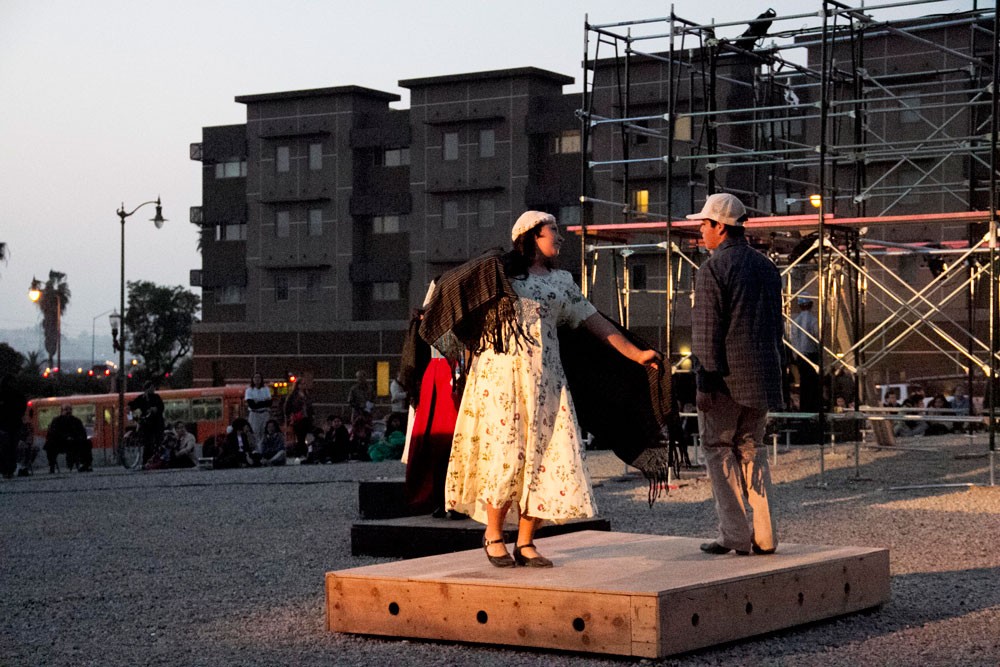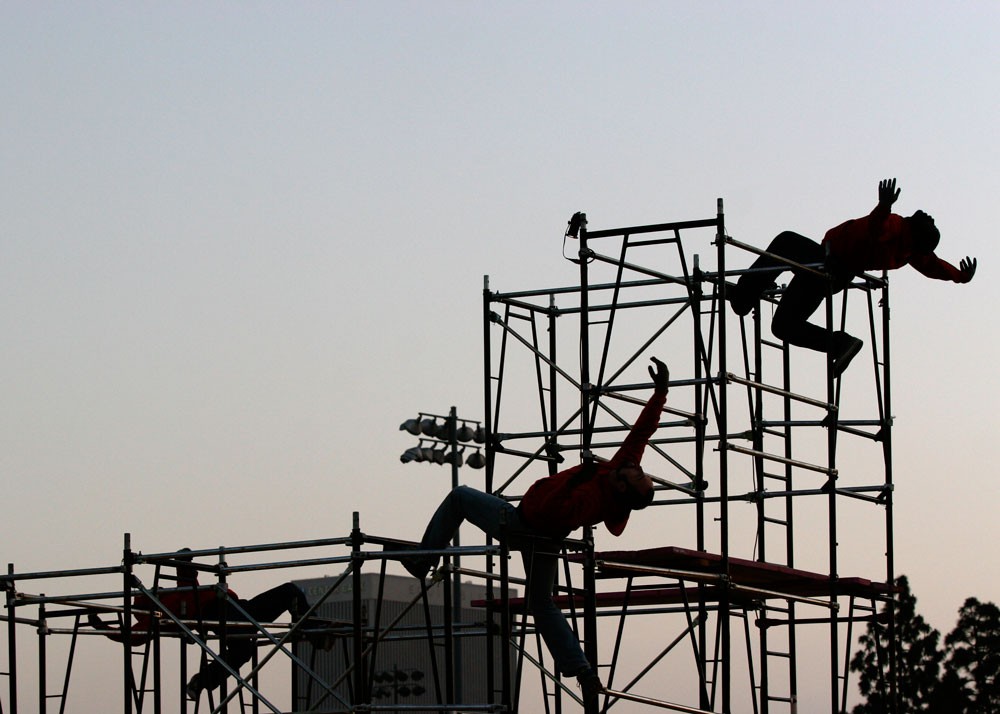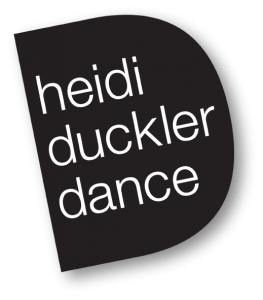
Photo by Andrei Andreev
Over the course of this month, we’ll reflect on our past work, and how we use dance as a tool for sparking introspection, conversation and rumination around social issues. We hope our audience members, past collaborators, and fans will share memories of their experiences at the Heidi Duckler Dance Theatre performances we highlight, and our fellow artists will share some of their own work, that’s rooted in social issues.
From 2010 to 2013 Heidi Duckler Dance Theatre brought its Expulsion series to vacant lots across Los Angeles (and Portland, OR). We staged the performances in these vacant lots as a means of community regeneration, and transformation: the empty space becomes a venue for public art, and community engagement.

Photo by Kaitlyn Pietras
The series directly addressed the universal theme of “home” and being forced to leave it. The process of re-inventing the work in each neighborhood both empowered and engaged the respective communities in the symbolic and transformative act of enlivening neglected space. HDDT collaborated with different ethnic dance troupes for each performance (including Danza Floricanto, Kim Eung Hwa Korean Dance Company, the Iranian-Armenian Djanbazian Dance Company, and Guinness World Record Little Ethiopia Cultural Group. Each troupe represented a group of people that had, at one time, found itself expelled from a place. The troupes told their own expulsion stories through their choreography.
Before or after each performance audience members participated in panel conversations with community leaders, artists, and organizers. In addition to shared experiences of personal expulsions, the conversations often focused on how, as a group, these individuals could build more harmonious communities.

Photo by Shannon Rodriguez
While HDDT hasn’t performed an Expulsion piece in four years now, the current political environment has us thinking a lot about the potential for arts and dance to provide a lens for considering more complex social issues. Through the Expulsion project we explored why people leave one place for another—through both dance and dialogue. Each refugee and immigrant has a unique story to share.
Expulsion engaged participants in the ritual of shared artistic experience, meaningful social discourse, and the positive reinforcement of art as regenerative communal practice—as much art has the potential to do. As we face uncertain times, and dialogue around social issues becomes more contentious—less focused in fact and more rooted in feeling, artists are faced with the challenge of creating new ways to catalyze conversations.

